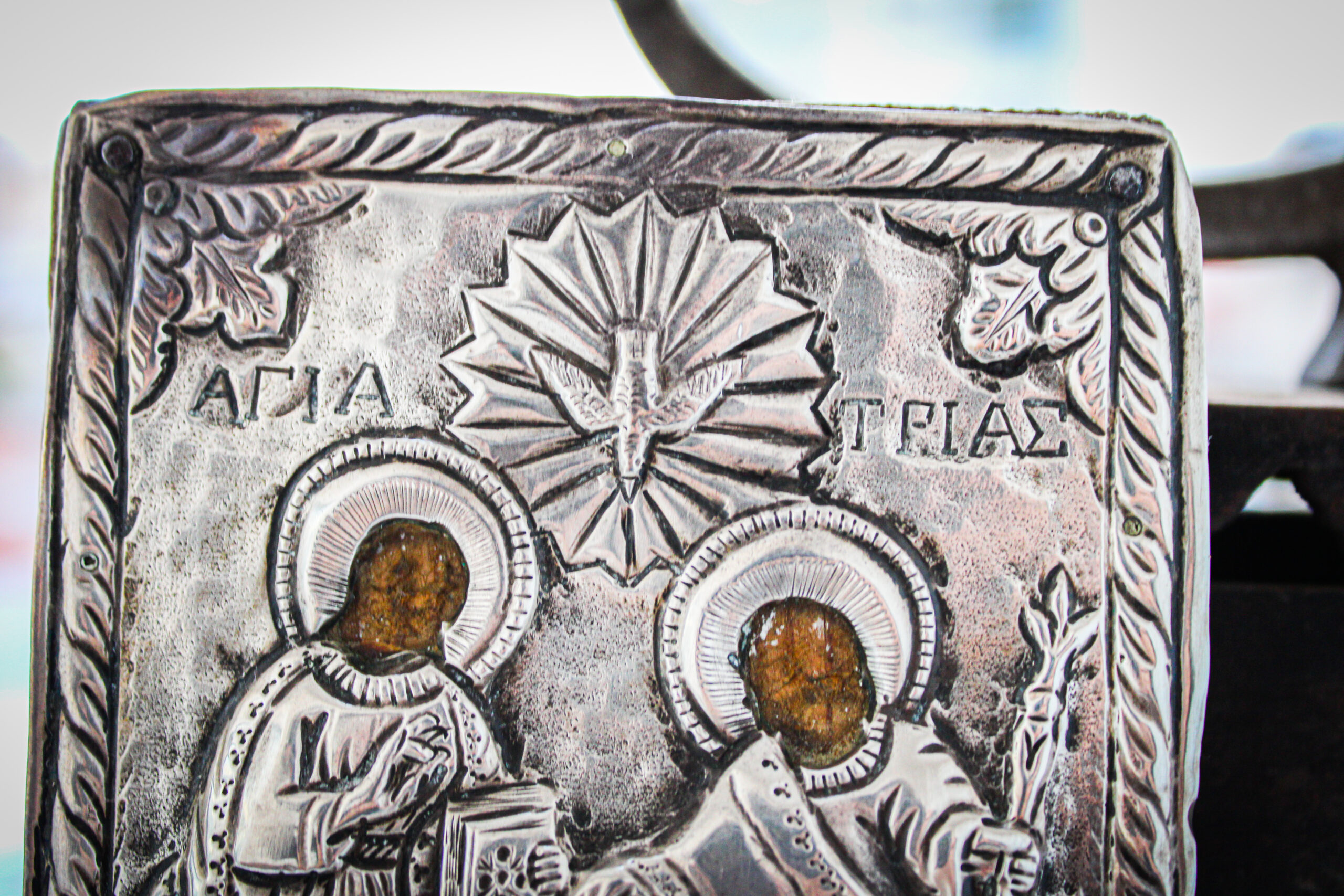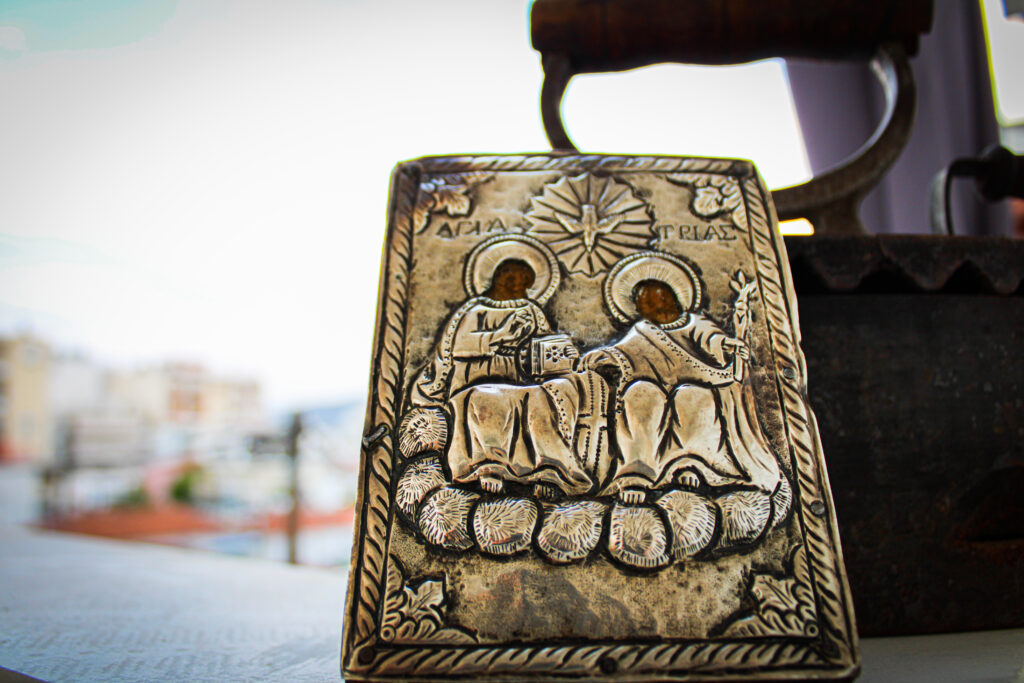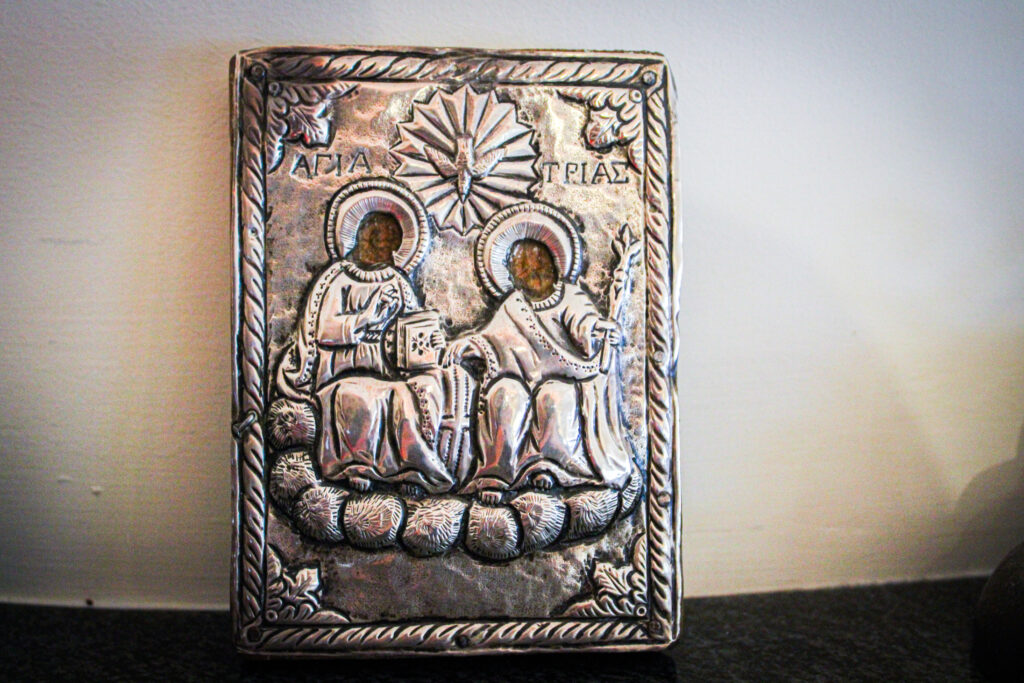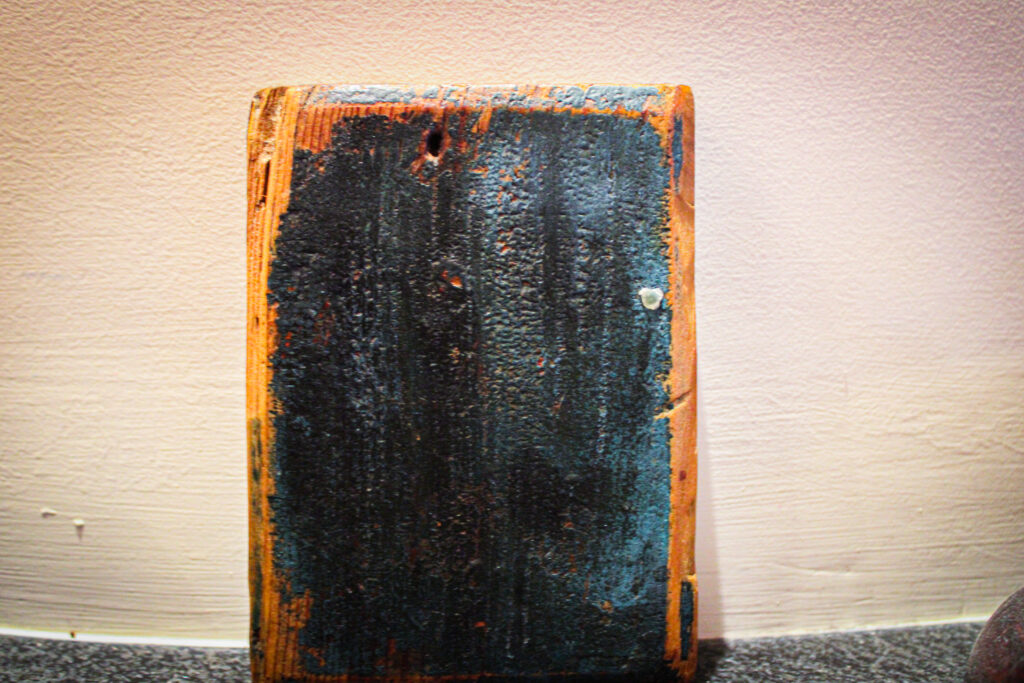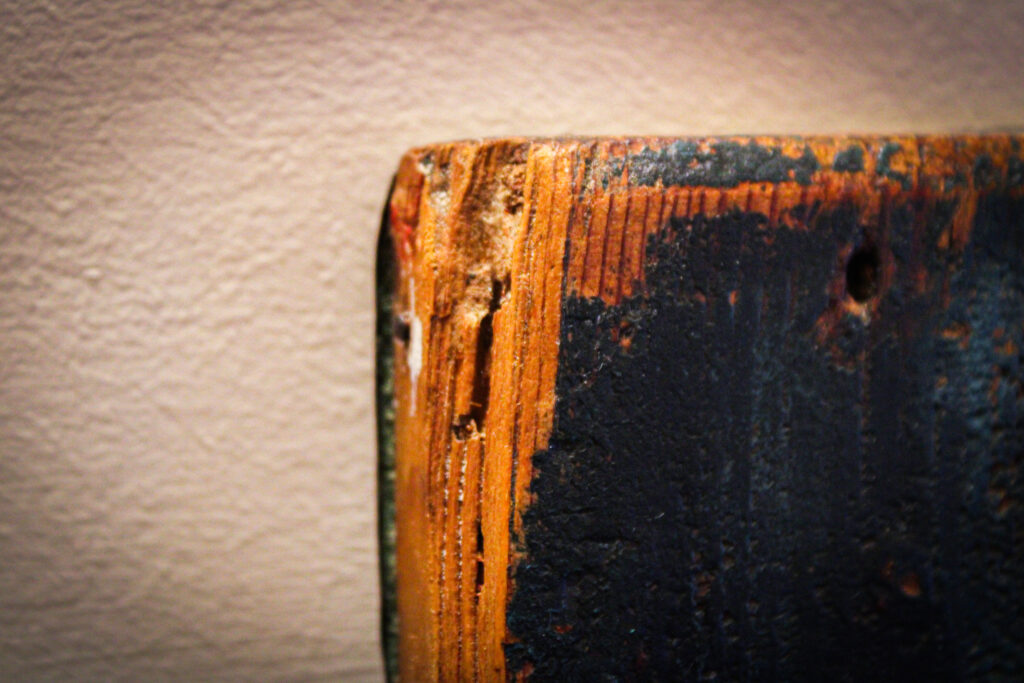At refugee quarter number 3 of Nea Ionia, at 14 Kallipoleos Street, stands the house of Kyriakoula Antoniou Moschou. Kyriakoula came to Greece from Englezonisi (Uzunada) in Asia Minor with her parents when she was about 11. Her father died young, as did her husband. So, Kyriakoula lived in this house with her mother, Marigi, and her two sons, Stavros and Petros. To make ends meet, Kyriakoula worked as an embroiderer, a washerwoman, a cleaner, and a worker at the Matsagkos factory.
The story of Kyriakoula Moschou is a story of displacement, loss, poverty, and hard labour; but it is also a story of strength, resilience and determination to build a better life. Her house was her queendom, founded on the relationships, the experiences and the affection of its residents.
The family of Kyriakoula Moschou brought few items with them to Greece, mostly religious icons. Apart from carrying great value for their owners, these icons soon became symbols for the whole neighbourhood. They gave hope and instilled courage, helping the refugees cope with the hardships of their everyday life. The icons did not just stand for their faith in God, but were also symbols of the solidarity and the kindness that brought the neighbourhood’s residents together. As Kyriaki, Kyriakoula’s granddaughter, aptly puts it: ‘This icon of the Holy Trinity did not just belong to my grandmother, but to the whole neighbourhood’.
—
Item description: Olga Lafazani
